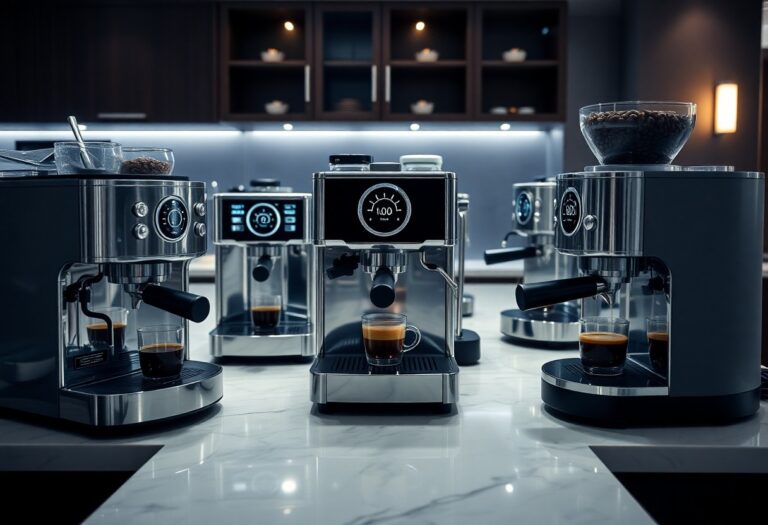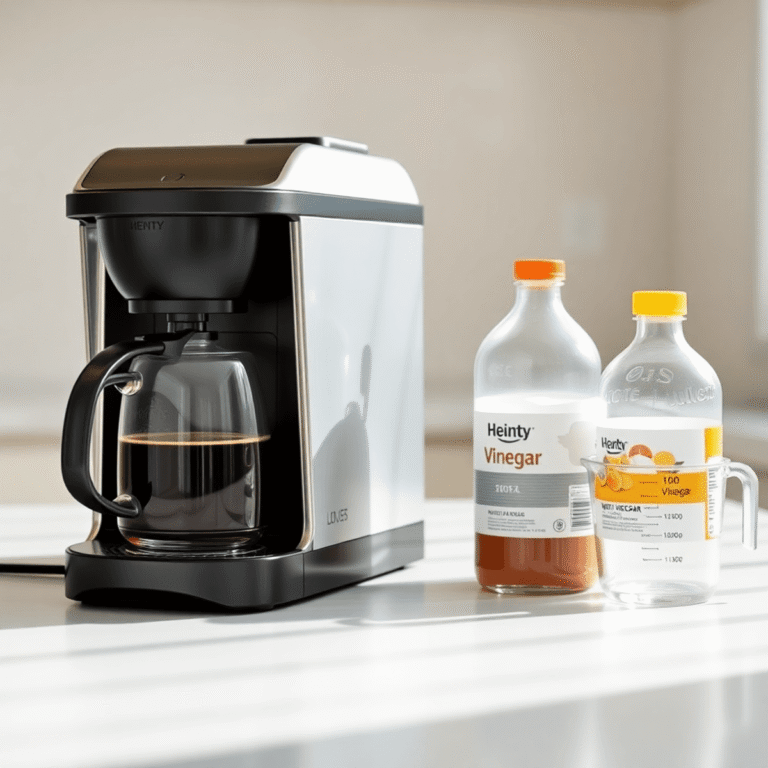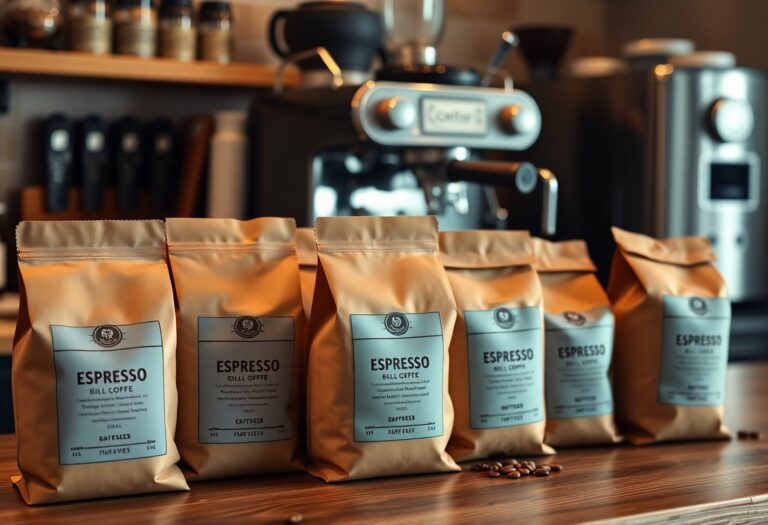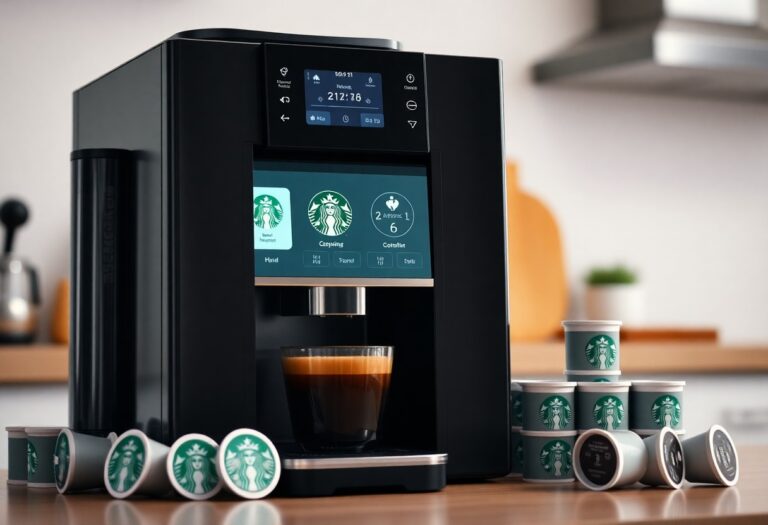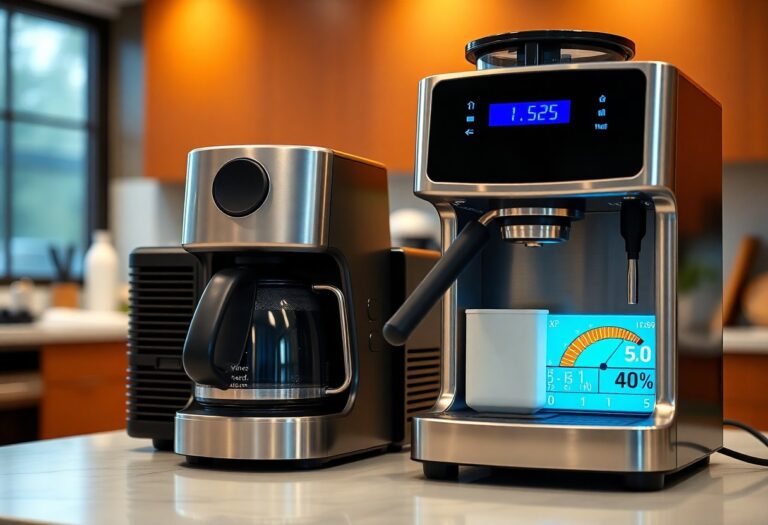What Sound Does a Coffee Machine Make – Audio Characteristics
Listen: the symphony of your coffee machine brings the morning to life. As you brew your favorite cup, you may notice distinct sounds—like gurgling, hissing, and dripping—each with its own importance. Understanding these audio characteristics can enhance your coffee experience and inform you about the machine’s performance. For instance, a rapid hissing may indicate steam creation, while a slow drip could signal that your machine is working at a leisurely pace. By tuning into these sounds, you not only appreciate your coffee ritual but also ensure optimal functionality of your device.
Key Takeaways:
- The sound of a coffee machine varies based on its type and brewing method, ranging from gentle hissing to robust gurgling.
- Common audio characteristics include the sound of boiling water, the whirring of grinders, and the drip of brewed coffee.
- Different coffee machines, such as espresso machines and drip coffee makers, produce distinct sound profiles that can enhance the brewing experience.
- The amplitude and frequency of sounds can differ based on machine quality, with higher-end models typically generating quieter operations.
- Audio cues from coffee machines can signal various stages of the brewing process, such as pre-infusion, extraction, and completion.

The Symphony of Sounds: What Happens Inside a Coffee Machine
As your coffee machine awakens, a captivating symphony begins. Inside, water is heated, creating steam that hisses and swells, while pumps and valves work in harmony to deliver that rich brew. You can almost feel the anticipation and excitement as these sounds intertwine, crafting a unique audio experience that signals the start of your day. Each step, from heating the water to brewing the coffee, contributes to this delightful orchestration.
The Mechanisms at Work: From Heating to Brewing
Heating elements generate a sharp, quick humming sound as they activate, raising the temperature of water efficiently. The transition to brewing amplifies a distinctive gurgle, produced by water under pressure flowing through coffee grounds. This carefully timed sequence ensures optimal extraction, releasing the full flavor and aroma that enhances each cup.
Analyzing Sound Frequency and Duration
The sounds of your coffee machine can be analyzed for both frequency and duration, revealing a unique auditory fingerprint. For instance, the heating phase typically ranges between 200 to 300 Hz, while brewing may produce lower-frequency sounds around 100 to 200 Hz. Each segment of the coffee-making process has its own specific frequency characteristics, contributing to a deeper understanding of sound production in your machine.
A detailed analysis of sound frequency and duration helps in understanding not just the operational efficiency but also the maintenance needs of your coffee machine. For example, if brewing sounds become abrupt or irregular, indicating a possible issue with the pump or blockages, you may be prompted to address potential problems before they worsen. Changes in sound frequency can indicate wear and tear, making sound analysis a practical aspect of ensuring a longer lifespan for your coffee machine.
Deconstructing the Coffee Brewing Noise Profile
Understanding the unique sound profile of your coffee machine offers insights into its operation. Each brewing noise plays a pivotal role in the overall experience. You might notice the Café™ Specialty Drip Coffee Maker – C7CDAAS2PS3 creates a melodic blend of sounds while brewing your morning cup, balancing function and enjoyment.
Identifying Key Sounds: Grinding, Brewing, and Pouring
As the brewing process unfolds, three distinct sounds emerge: the grinding of coffee beans, the rushing of hot water, and the gentle pouring into your cup. Each component contributes to an evolving auditory landscape, influencing your anticipation and satisfaction. Your coffee rituals come alive through these symphonic auditory cues, enhancing the overall experience of brewing and savoring each sip.
Comparing Sound Intensity Levels Across Different Machines
Sound intensity levels can vary significantly between coffee machines, impacting your brewing experience. Machines with grinders tend to produce louder noises compared to drip models. Delving into specifications, you will find that high-end machines may innovate quieter brewing technologies, improving the experience without compromising functionality. The table below highlights sound intensity comparisons among various machines.
Sound Intensity Levels of Coffee Machines
| Machine Type | Sound Level (dB) |
|---|---|
| Manual Espresso Machine | 80-90 dB |
| Café™ Specialty Drip Coffee Maker | 60-70 dB |
| Single Serve Pod Machine | 70-80 dB |
| French Press | Quiet (around 50 dB) |
Analyzing sound intensity levels reveals that manual espresso machines can peak at around 90 dB, creating noticeable noise during operation, while the Café™ Specialty Drip Coffee Maker – C7CDAAS2PS3 maintains a softer sound range of 60-70 dB. This reduction in sound might be imperative for those brewing early in the morning or in quieter settings. Understanding these differences allows you to make educated choices when selecting your ideal coffee brewing companion.

The Impact of Design on Acoustic Performance
Your coffee machine’s design significantly influences its sound output. Manufacturers are increasingly aware of how the shape, casing, and internal layout can manage and modulate noise. Sleek, streamlined machines often minimize turbulence, while well-placed components reduce rattling and vibrations. For instance, a tightly sealed water reservoir can prevent the sound of sloshing water, creating a more harmonious brewing experience. This design attention shifts the focus from a purely aesthetic quality to one that encompasses the overall acoustic environment of your kitchen.
Exploring Materials: How Build Quality Affects Sound
Materials play a crucial role in sound production and transmission within your coffee machine. High-quality metals and sound-absorbing plastics can greatly minimize unwanted noise. For example, stainless steel not only provides durability but also dampens vibrations effectively. On the other hand, lower-grade plastics can amplify sound, leading to a clanking or echoing effect during operation. The right material selection not only enhances longevity but also contributes to a more enjoyable auditory experience when brewing your favorite cup.
Assessing Noise Dampening Technologies in Modern Machines
Modern coffee machines incorporate various noise dampening technologies to enhance user experience. Some models feature vibration-resistant designs, while others utilize specialized sound-absorbing materials to reduce noise levels. Additionally, these machines often include advanced insulation in their heating elements to deter sound transmission. For example, the integration of silicone padding around the motor compartments can minimize the clatter you might typically hear. By investing in machines with these technologies, you can enjoy quieter, more peaceful coffee-making rituals without sacrificing brewing efficiency.
The Influence of Brewing Methods on Sound Dynamics
Each brewing method offers a distinct auditory experience, influenced by factors like pressure, temperature, and equipment design. For example, the rapid extraction process in espresso machines generates intense sounds, while the gentle drip of a brewed coffee can be soothing. The unique sounds you hear can enhance your coffee ritual, elevating the experience beyond just taste.
Espresso vs. Drip: A Sound Comparison
Sound Characteristics of Espresso vs. Drip Coffee
| Brewing Method | Sound Characteristics |
|---|---|
| Espresso | High-pitched hissing and intense gurgling, followed by a smooth, rich hiss when pouring. |
| Drip Coffee | Soft bubbling and dripping sounds, accompanied by the gentle splashing of coffee into the pot. |
Specialty Brew Techniques and Their Unique Audio Signatures
Specialty brew techniques like pour-over, siphon, and Aeropress each produce distinct sounds that add to their charm. For instance, the rhythmic drizzling of water in pour-over creates a melodic bubbling, while siphon brewing plays a symphony of gurgles and pops as water vapor interacts with coffee grounds. These unique audio signatures can even evoke emotions, transforming your coffee brewing into a sensory event.
Each specialty brew method offers you a chance to focus on the auditory experience as much as the taste. With pour-over, you hear a tranquil, rhythmic sound as the water dances over the coffee grounds, creating a calming atmosphere. Siphon brewing, on the other hand, introduces a theatrical aspect, where the audible pops and bubbles become part of the performance. These delightful sounds elevate your coffee ritual, making every brew a memorable occasion.
The Cultural Significance of Coffee Machine Sounds
The sounds produced by coffee machines carry profound cultural significance, often evoking memories and emotions linked to shared experiences. For many, the gentle brewing gurgle or the hissing steam signifies the start of a daily ritual, a moment of peace in a bustling day. In coffee-loving cultures, these sounds foster a sense of community and belonging, as coffee shops and homes alike resonate with the symphony of brewing. Over time, these auditory cues have become intrinsically tied to the appreciation of coffee, amplifying its role as a cultural staple.
Sound as an Indicator of Quality and Freshness
Distinct sounds from your coffee machine can serve as powerful indicators of the drink’s quality and freshness. The rich, bubbling sounds during brewing often signal that the coffee beans are at their peak, enhancing the overall flavor profile. Conversely, an unexpected, inconsistent noise may suggest stale beans or mechanical issues, prompting you to be attuned to both the sound and the taste of your brew.
The Role of Audio in the Coffee Experience: Rituals and Atmosphere
Audio plays an imperative role in shaping your coffee experience, encompassing both personal rituals and the environment around you. The intentional act of brewing coffee, accompanied by its characteristic sounds, creates a sensory atmosphere that promotes mindfulness and satisfaction. The sounds enhance the anticipation of savoring your beverage, transforming routine into a cherished moment. For many, this auditory landscape deepens the connection to the brewing process, establishing a multisensory experience that enriches everyday life.
In coffee rituals, the auditory elements—like the whir of the grinder and the soft drip of the brew—contribute to a calming backdrop that elevates your engagement with the process. You may find that these sounds enhance your ability to focus or relax, cultivating an inviting atmosphere whether at home or in your favorite café. As you embrace these moments, the blend of sound, taste, and aroma creates a unique harmony that transcends a mere beverage, enveloping you in a rich, immersive experience that defines your coffee journey.
Final Words
On the whole, understanding the audio characteristics of a coffee machine enhances your appreciation of the brewing process. By tuning into the subtle nuances of its sounds—from the gentle hiss of steam to the rhythmic timing of water percolation—you can gain insight into your machine’s operation. These sounds not only signify the preparation of your favorite brew but also contribute to the overall experience of enjoying coffee. Recognizing these auditory cues can help you fine-tune your coffee-making routine and elevate your daily ritual.
FAQ
Q: What are the primary sounds a coffee machine makes during operation?
A: A coffee machine typically produces a variety of sounds during its operation. These include a hissing noise when steam is released, the sound of water gurgling as it heats up and travels through the system, and a rhythmic dripping sound when coffee is being brewed. Additionally, grinders in machines that include an integrated grinder may emit a grinding noise when beans are being processed.
Q: How does the sound of a coffee machine differ between espresso machines and drip coffee makers?
A: Espresso machines often produce a more pronounced hissing or steaming sound due to the pressure generated while brewing. This can be combined with a rhythmic pumping sound as water is forced through the coffee grounds. In contrast, drip coffee makers generally emit softer sounds, such as a gentle bubbling or dripping noise as water percolates through the coffee grounds, making them quieter overall.
Q: Are there any coffee machines designed to operate quietly?
A: Yes, some coffee machines are specifically designed to minimize noise. These machines often utilize quieter grinding mechanisms and sound insulation materials to reduce the sounds produced during brewing. Brands that prioritize low-noise technology provide options for users who prefer a quieter coffee-making experience, making them suitable for early mornings or shared living spaces.
Q: Why does the sound of a coffee machine vary with different coffee types being brewed?
A: The sound produced by a coffee machine can vary based on the coffee type because of changes in brewing methods and techniques. For instance, brewing espresso typically involves high pressure and rapid heating, leading to louder hissing and steaming sounds. In contrast, making a cold brew involves longer steeping times with little to no sound produced at all, aside from gentle bubbling when water is initially added.
Q: Can the sound quality of a coffee machine affect the overall brewing experience?
A: Yes, the sound quality of a coffee machine can contribute to the overall brewing experience. Some users find comforting sounds relaxing and associate them with the anticipation of enjoying a fresh cup of coffee. Additionally, certain sounds may signal different stages of the brewing process, allowing users to gauge when their coffee is ready. A well-designed coffee machine with pleasant operating sounds can enhance the ritual of making and enjoying coffee.


